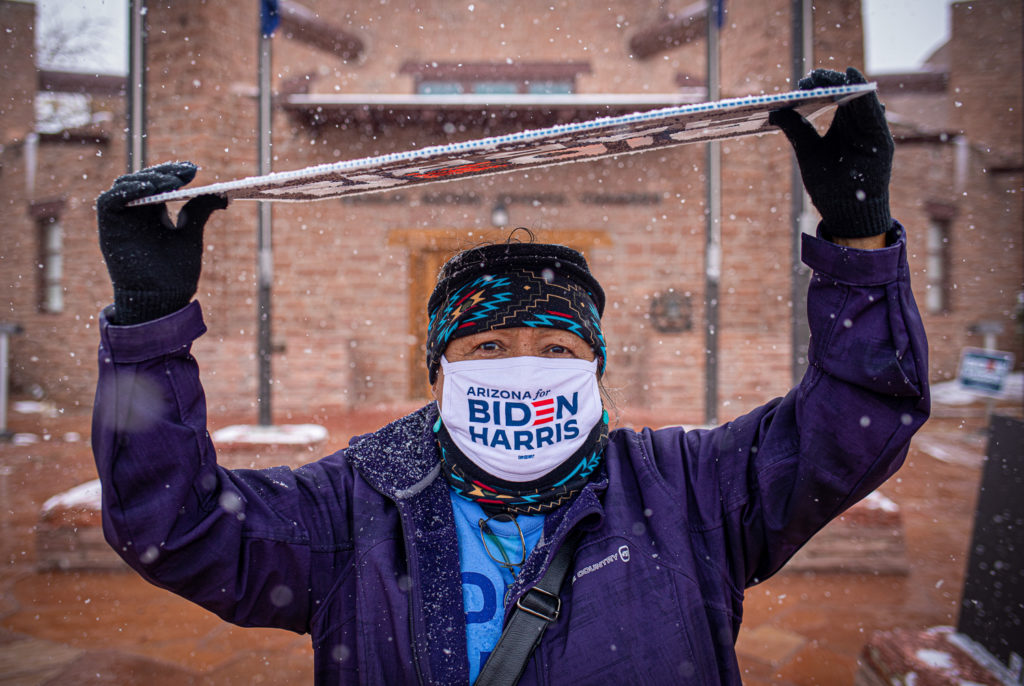Why Democrats Won Arizona

Most of the narrative about Democrats winning Arizona has been about Maricopa County. And there’s a reason for that. But let’s be clear: Democrats won Arizona because of overwhelming support by the state’s sizable Native population.
2020, in particular, has been a challenging year for tribal communities. Indigenous people were hit disproportionately hard by the pandemic, which compounded the underlying health and environmental injustices they already face. By May, the Navajo Nation quickly recorded the highest number of Covid-19 cases per capita in the country, exceeding numbers in New York and New Jersey. Yet despite the devastating health emergency, Republican state officials did little to keep the virus from spreading. Not only did the Trump administration slash funding for Indigenous communities, but policies for mask mandates, business lockdowns, and translations for Covid-19 resources were lacking. And when the federal stimulus package rolled out nationwide, finances were slow to arrive in tribal nations.
“There’s been a lot of distrust with the government, especially with treaties and funding. Anytime we get a budget, they tend to get cut,” Benally said. “When nations do expect funding from the federal government, it’s very minimal and it doesn’t go very far.”
Native Americans continue to reckon with a longstanding history of neglect and mistreatment. These unjust legacies have impacted their access to health care services, education, water affordability, and other critical resources. So when Biden and his running mate, Kamala Harris, released a comprehensive plan for tribal nations in October, which highlights strengthening nation-to-nation relationships and addressing health disparities, Indigenous communities caught a slight glimpse of hope.
Jade Begay, a member of the Diné and Tesuque Pueblo tribes of New Mexico and the creative director of NDN Collective, an organization dedicated to building Indigenous power, says she was encouraged by the first two points in Biden’s plan, which reflect the current crises tribal nations are facing, including growing mistrust in the federal government as well as the pandemic that has strained health care services in Indigenous communities.
“But in years to come,” she added, “what would be great to see from elected officials and the Democratic Party, if they want to keep winning Indian Country, is investment to remove voter suppression barriers, to make voting more accessible to our communities, to invest in roads, and all of these things that just make traveling to cast a vote easier.”
As with most marginalized communities across the country, voter suppression and accessibility issues run rampant in tribal nations. For instance, unjust mail services make it difficult for Native Americans on tribal lands to vote. Scottsdale, Arizona, a city of roughly 184 square miles, has 12 post offices compared to 26 post offices in the entire Navajo Nation, which covers more than 27,000 square miles; the Salt River Pima-Maricopa Indian Community has zero.
In addition to Biden’s victory in Arizona, Begay said Indigenous communities played a pivotal role in helping Mark Kelly flip a Senate seat to Democrat. Kelly spent campaign dollars actively reaching out to the Navajo Nation, running ads in the Diné language to bridge communication barriers. “That kind of outreach is really important and it shows the level of care and thoughtfulness in language gaps,” she said.
Visualizing this is striking.



